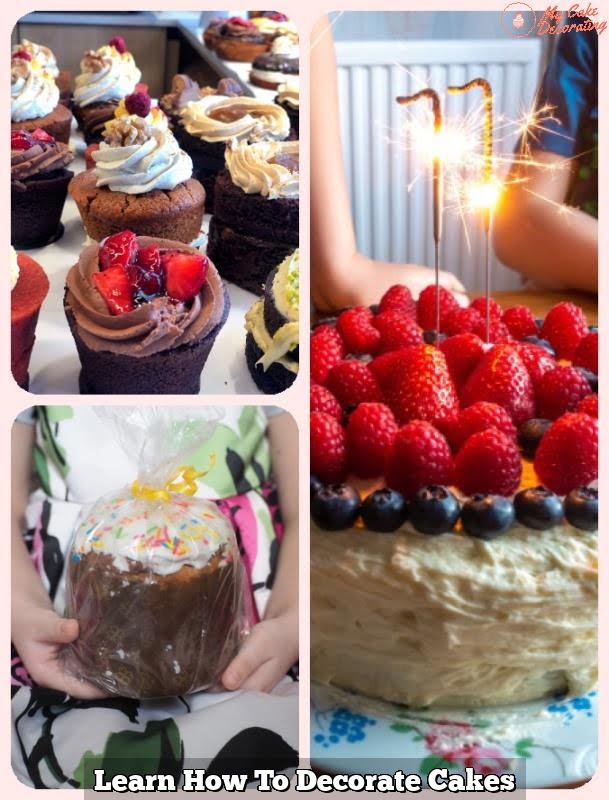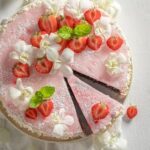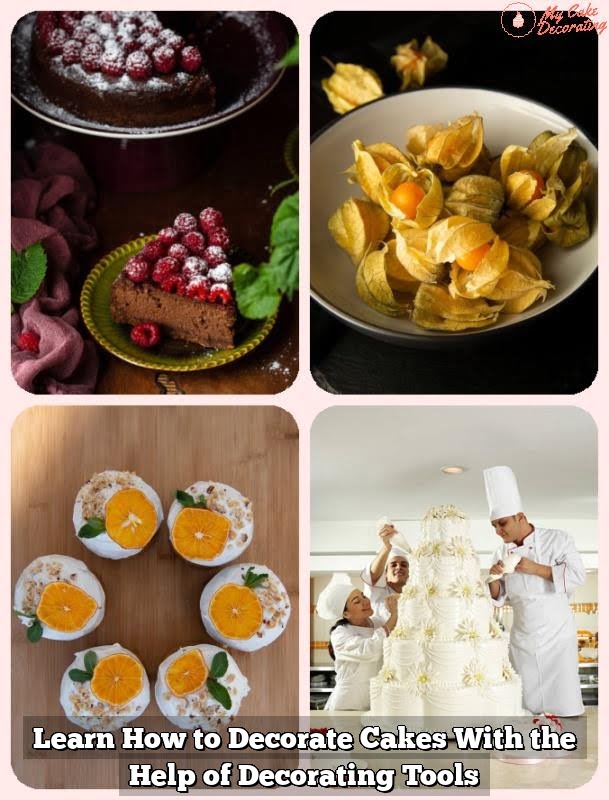Have you ever marveled at the beautifully decorated cakes in bakeries or on social media and wondered how to learn to decorate cakes yourself? Cake decorating has become a popular trend, with more and more people opting to create their own hand-decorated masterpieces at home. Whether it’s for a special occasion or just for fun, learning the art of cake decorating can be a satisfying and rewarding skill to develop.
The satisfaction of creating something beautiful and delicious from scratch is unparalleled. With the growing availability of cake decorating tools and ingredients, it’s easier than ever to explore the world of cake decoration. From basic techniques like piping and smoothing to more advanced skills like sculpting and airbrushing, there’s no limit to what you can achieve in cake decorating.
In this article, we’ll guide you through the various aspects of learning to decorate cakes, from understanding the essential tools and ingredients to mastering beginner techniques and eventually pushing the boundaries with advanced skills. Whether you’re a beginner looking to start your cake decorating journey or an experienced decorator wanting to elevate your skills, there’s something here for everyone.
Join us as we delve into the art of cake decorating and inspire you to find your own creative flair in this delightful craft.
Understanding the Basics
When it comes to learning how to decorate cakes, understanding the essential tools and ingredients is key. Whether you’re a beginner or looking to refine your skills, having the right equipment and quality ingredients can make all the difference. Here are some important aspects to consider:
- Essential tools and equipment: To get started with cake decorating, you’ll need basic tools such as piping bags, tips, offset spatula, turntable, and a good quality cake stand. Investing in these tools will make the decorating process much smoother and more enjoyable.
- Types of icing, fondant, and edible decorations: Understanding the different types of icing (buttercream, royal icing, ganache) and fondant (rolled fondant, modeling chocolate) is important for achieving different effects. Additionally, knowing how to work with edible decorations like sugar flowers, sprinkles, and edible glitter can elevate your cake designs.
- Tips for choosing the right ingredients: The quality of your ingredients can greatly affect the outcome of your decorated cakes. When selecting ingredients like flour, sugar, butter, and flavorings, it’s important to choose high-quality products for the best results.
By familiarizing yourself with these basic tools and ingredients for cake decorating from the start of your journey, you’ll be setting yourself up for success in creating beautifully decorated cakes.
As you delve into the world of cake decorating, remember that practice makes perfect. The more you experiment with different tools and ingredients, the more confident you’ll become in your decorating abilities.
Getting Started
If you’re new to the world of cake decorating, mastering some basic techniques is the perfect place to start. Here are some beginner cake decorating techniques to help you get started on your creative journey:
- Mastering simple piping techniques: Learning how to pipe icing onto a cake can open up a world of creative possibilities. Practice creating different shapes and designs with your piping bag.
- Smoothing and leveling: Achieving a smooth and level surface on your cake is essential for a professional-looking finish. Invest in a good offset spatula and practice smoothing out your frosting or fondant.
- Creating basic designs: Start with simple designs like polka dots, stripes, or swirls. These designs can be easily achieved with basic tools and can add visual interest to your cakes.
It’s important to remember that practice makes perfect when it comes to cake decorating. Don’t be afraid to make mistakes and keep experimenting with different techniques until you feel confident in your skills.
Next, let’s talk about working with different types of icing and fondant. Each type of icing has its own unique properties, so it’s important to understand how to work with them effectively:
- Buttercream: This classic icing is versatile and easy to work with, making it a great option for beginners. Practice achieving different textures and finishes with buttercream.
- Fondant: While fondant can be more challenging to work with, it allows for smooth, flawless finishes on cakes. Take the time to practice rolling out fondant and covering cakes neatly.
Remember, patience is key when learning beginner cake decorating techniques. The more time you dedicate to practicing these basic skills, the more confident you’ll become in your abilities as a cake decorator.
Intermediate Techniques
Once you have mastered the basics of cake decorating, it’s time to elevate your skills and take your creations to the next level. The intermediate techniques in cake decorating focus on more intricate designs, patterns, and the use of color and texture. These techniques require precision and attention to detail, but they also provide an opportunity to showcase your creativity and unique style.
One of the key aspects of elevating your cake decorating game is mastering more advanced piping techniques. This includes creating delicate lace patterns, intricate flowers, and stunning borders. Additionally, understanding how to work with different icing consistencies is crucial for achieving professional-looking designs. It’s important to practice these techniques regularly in order to perfect them and gain confidence in using them for your cake decorations.
Color and texture play a significant role in creating visually appealing cakes. Intermediate decorators should focus on learning how to blend different colors seamlessly, as well as adding texture through various piping tips and tools. Understanding the principles of color theory will help decorators create harmonious and eye-catching designs that stand out from the crowd.
In addition to perfecting new techniques, it’s vital for intermediate cake decorators to pay attention to the finishing touches. This includes ensuring smooth fondant application, sharp edges on buttercream cakes, and flawlessly executed details. Taking the time to refine these elements will contribute to professional-quality cakes that are sure to impress any audience.
| Technique | Details |
|---|---|
| Piping Techniques | Create intricate lace patterns, delicate flowers, and stunning borders |
| Color Theory | Learns how to blend different colors seamlessly; understanding principles of color theory |
| Finishing Touches | Ensuring smooth fondant application; sharp edges on buttercream cakes; flawlessly executed details |
Advanced Skills
As you become more comfortable with basic and intermediate cake decorating techniques, you may find yourself eager to push the boundaries and take your skills to the next level. Advanced cake decorating involves more intricate designs, sculpting, airbrushing, and advanced fondant work. This section will provide guidance on how to elevate your cake decorating game and create show-stopping masterpieces.
One of the key aspects of advanced cake decorating is mastering sculpting techniques. Whether it’s creating 3D figures or intricate shapes, sculpting adds a new dimension to your cake designs. Using tools such as modeling chocolate and gum paste allows for intricate detailing and lifelike representations. Understanding the use of color, texture, and proportion is crucial in achieving realistic sculpted elements on your cakes.
Another advanced skill to explore is airbrushing, which allows for seamless blending of colors and smooth gradients on cakes. Airbrushing techniques can be used to create beautiful backgrounds, shading effects, and intricate patterns. With practice, you can achieve professional-looking results that add depth and dimension to your cake designs.
Furthermore, advanced fondant work involves creating detailed textures, patterns, and custom designs using fondant. Techniques like ruffling, draping, and fabric effects can add elegance and sophistication to your cakes. Additionally, exploring advanced fondant painting techniques opens up a world of creative possibilities for personalized cake decorations.
| Advanced Cake Decorating Skills | Description |
|---|---|
| Sculpting | Mastering 3D figures and lifelike shapes using modeling chocolate and gum paste |
| Airbrushing | Creating seamless blending of colors and smooth gradients for professional-looking results |
| Advanced Fondant Work | Creating detailed textures, patterns, custom designs using fondant painting techniques |
Troubleshooting
Addressing Cracked Fondant
One of the most common challenges in cake decorating is dealing with cracked fondant. This can happen due to a variety of factors such as temperature, humidity, or improper application. To prevent this issue, it’s important to ensure that the cake is properly covered with a smooth layer of buttercream before applying the fondant.
Additionally, kneading the fondant properly and rolling it out evenly can help prevent cracks. If cracks do occur, they can often be smoothed out by gently applying some vegetable shortening to the surface.
Managing Icing Consistency Issues
Another common issue that cake decorators face is managing icing consistency. Different types of icing require different consistencies for various techniques such as piping or flooding.
To address this challenge, it’s essential to find the right balance between adding liquid (such as water or milk) and powdered sugar to achieve the desired texture. It’s also helpful to invest in a set of quality piping tips and gel food coloring as these can greatly impact the final outcome of your decorated cakes.
Preventing Color Bleeding
Color bleeding on decorated cakes can be frustrating, especially when using vibrant colors for intricate designs. To prevent this issue, consider using gel food coloring instead of liquid coloring since it has a thicker consistency and won’t bleed as easily into the surrounding areas.
Another key factor in preventing color bleeding is allowing each layer of icing or decoration to fully dry before moving onto the next step. This helps create cleaner lines and prevents colors from blending together unintentionally.
By addressing these common cake decorating challenges with practical solutions and proactive measures, decorators can enhance their skills and produce beautifully decorated cakes without any unnecessary frustration or setbacks.
Inspiration
When it comes to cake decorating, finding your own personal style and creative flair can make all the difference in creating stunning and unique designs. Whether you prefer a classic and elegant approach or love experimenting with bold and unconventional designs, developing your own cake decorating style is an exciting part of the journey.
The Importance of Personal Style
Having a distinct cake decorating style not only sets you apart as a decorator but also allows you to express your personality and creativity through your creations. It’s what makes your cakes stand out and leaves a lasting impression on those who see and taste them. Finding your personal style can also bring a sense of fulfillment and satisfaction in knowing that each cake is a reflection of your unique vision.
Sources of Inspiration
Inspiration for cake decorating can come from anywhere – from nature and architecture to fashion and art. Paying attention to details in everyday life, such as the colors of a sunset or the patterns on a piece of fabric, can spark ideas for your next cake design. Many decorators also find inspiration from other forms of art, whether it’s recreating famous paintings or incorporating elements from different cultural styles into their cakes.
Showcasing Your Unique Style
Once you’ve found your cake decorating style, don’t be afraid to showcase it proudly. Whether it’s through social media, entering competitions, or offering custom cake services, sharing your unique designs with others allows you to connect with like-minded individuals who appreciate the artistry behind cake decorating. It also provides an opportunity for growth and learning as you receive feedback and discover new techniques from fellow decorators.
Resources
In conclusion, learning to decorate cakes is not just about creating visually appealing edible masterpieces, it’s also about embracing the satisfaction of mastering a new skill and expressing creativity. As you continue your cake decorating journey, it’s important to remember that practice, patience, and perseverance are key to honing your skills.
Whether you’re a beginner or seeking to elevate your cake decorating game to a more advanced level, there are resources available to support your learning and growth in this art form.
By exploring recommended books, online courses, and tutorials specifically tailored for cake decorating, you can continue building your knowledge and expertise in this craft. Additionally, consider attending local cake decorating classes or workshops to gain hands-on experience under the guidance of experienced instructors. These opportunities not only provide valuable skills but also connect you with a community of fellow cake decorators who can offer support and encouragement.
Furthermore, joining communities and forums dedicated to cake decorating allows you to share knowledge, seek advice when facing challenges, and draw inspiration from the work of others. Remember that finding your personal style and creativity in cake decorating is an ongoing journey.
Therefore, continue seeking inspiration from various sources such as nature, art, or even other beautiful cake designs as you refine your own unique approach to cake decoration. With dedication and the right resources at your disposal, you can truly excel in the art of cake decorating and bring joy to those who appreciate your delicious creations.
Frequently Asked Questions
Can I Teach Myself to Decorate Cakes?
Yes, it is absolutely possible to teach yourself how to decorate cakes. With the abundance of online resources, tutorials, and instructional videos available, you can easily learn various cake decorating techniques at your own pace. Practice, patience, and a willingness to learn and improve are key factors in becoming proficient at cake decorating.
Is Cake Decorating Hard to Learn?
Cake decorating can be challenging to learn, especially if you are aiming for more intricate designs and techniques. However, with dedication and practice, it is definitely achievable. Like any skill, mastering cake decorating takes time and effort. Starting with the basics and gradually building up your skills will make the learning process more manageable.
What Does a Beginner Need for Cake Decorating?
For beginners just starting out in cake decorating, some essential items are piping bags and tips for creating designs on the cake, a rotating cake stand for easier access to all sides of the cake, offset spatulas for smooth frosting application, a bench scraper for creating clean edges, and a basic set of food coloring gels. It’s also helpful to have pre-made fondant or gum paste for creating decorations.
Additionally, investing in some beginner-friendly instructional books or online courses can provide valuable guidance and inspiration as you start your journey into cake decorating.

Welcome to my blog about home and family. This blog is a place where I will share my thoughts, ideas, and experiences related to these important topics. I am a stay-at-home mom with two young children. I hope you enjoy reading it! and may find some helpful tips and ideas that will make your home and family life even better!





